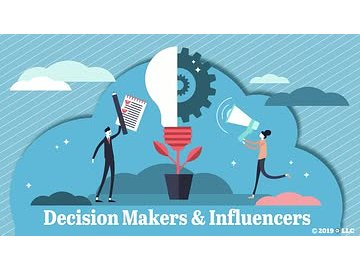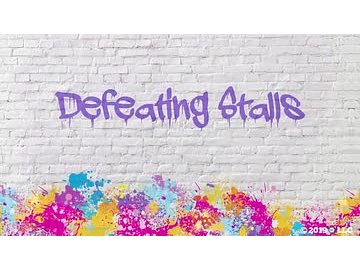Without a need, don't proceed. This should be ingrained in your sales psyche. You can't force a need onto a customer. You can't charm them into thinking they have a need that you can meet. Your job is to determine what the customer needs and insert that into your sales process, if you're able. Let's take a look at how to determine what exactly the customer needs. We'll discuss the psychology of a sale, increasing revenue versus reducing expenses, and what you should be doing to successfully meet your customers' needs.
Today's customers are busy with no time to waste on forming personal relationships with their sellers. Learning the Quicksell is fast, easy, and it works!
Determining Customer Needs
Every sale starts with a question: What does the customer truly need? That answer should shape everything that follows - from how you frame your offer to whether you make one at all. Sales professionals know the rule: don't proceed without a need. This course helps you develop the research habits, listening skills, and strategic mindset that turn information into insight and insight into action.
Turning Features into Benefits
Everyone's favorite radio station is WII-FM. This stands for "What's In It For Me?", and you've probably heard the phrase before. It's prevalent because it's true. Your customers do not care about how big, shiny, fancy, or delicious your products are. They care about benefits. So it's a matter of fine tuning your presentation, which this course proudly presents. We show you how to move easily from features to benefits, which leads to the nod, then to the "Yes." And that is truly music to the ears.
A sales process follows a series of steps that convert a prospective buyer into a customer. Companies need this process to help their sales team identify more qualified leads, close more deals, and ensure your business provides a consistent experience to every prospect. An effective, successful sales process empowers and informs the buyer and should reflect the way customers want to buy. This cultivates a positive representation of your brand and product, building lasting relationships. In this course, we'll talk about the seven steps to an effective sales process: prospecting, qualifying, approach, presentation, handling objections, closing, and follow-up.
Asking Great Sales Questions
Asking the right kind of questions at the right time is how deals happen. Executing this successfully takes skill and practice. It shouldn't be an interrogation, but you definitely need to do more than scratch the surface to get to the customer's true needs. Let's go over different types of questions, including when and how they should be used. After that, we'll discuss the do's and don'ts of asking sales questions, and then cover some example questions to ask your prospects and get them talking.
Being quiet can be a very important part of the sale. It can be the difference between making the sale and walking out the door with nothing. This course explores the concept of "shutting up," how it fits in to the Quicksell, and its role in selling to different personality types. Use this technique, and you'll soon see that silence truly is golden!
Emotional Selling and Storytelling
"Two little mice fell in a bucket of cream. The first mouse quickly gave up and drowned. The second mouse, wouldn't quit. He struggled so hard that eventually he churned that cream into butter and crawled out. Gentlemen, as of this moment, I am that second mouse." Christopher Walken spoke this memorable, motivational quote in the movie "Catch Me If You Can." Stories, quotes and having a passion for what you sell invoke feelings and emotions in your customers. Emotions are what drive people to buy. This is a powerful tool that every salesperson should be leveraging. That's what we'll discuss in this course on Emotional Selling and Storytelling.
The Order-Taker & the Professional
"Never settle for the path of least resistance."
Yes, in sales, it's possible to meet your quotas, keep your boss off your back, and do as little work as possible to get by. You can also surpass your quotas, keep your sales funnel full, meet or exceed your customers' expectations, and rise up the ranks. Who would you rather be: the order-taker or the professional?
Creating Your Elevator Pitch
You have 60 seconds to sell your product or service. How do you make the most of it? That's what this course is all about. An elevator pitch is a short, memorable description of what you sell and its benefits. It comes from the idea of succinctly presenting your product or service on an elevator ride, thereby enticing your audience, or fellow passengers. The goal isn't to sell right away, but to gain interest. In this video, we'll talk about both writing and delivering your elevator pitch.
YES! We're talking about the best part of your gig: writing SALES PROPOSALS! Who wants to be out there selling, when you can be drafting paperwork?! Okay, maybe this isn't your favorite part of the job, but it's a very important one. A good proposal informs the client, demonstrates your company's value, and justifies the client's investment into your business, so it has to be done right. Let's go over how to write a really great sale proposal. We'll go through each section, giving you a guideline to follow for future use.
Tough Customers: The Bully
You run into all different types, working in sales. You'll meet wonderful customers who become friends, and you'll meet others who are awful to deal with. In this course, we'll talk about a tough customer that you're likely to run into during sales calls: the bully. This client may raise their voice, make demands, and dominate the conversation. But you still need to make the sale. Let's discuss how to sell to these people. We'll touch on nerves, body language, and tone. We'll also go over some conversational tips and the proper ways to handle conflict.
Tom Petty sang that "The waiting is the hardest part," but many of us feel that it's the closing. At closing, it can seem that you and your customer are pitted against each other, coming from opposite corners. But what if you took off the gloves and put on a different perspective, and role? The one of therapist, coach, or guide? What if you were just simply guiding them through a path to met needs and benefit realization? And it was almost as if you were giving them a "gift" in the close? This course shows you the way.
Interactions with customers can be wonderful. You have the opportunity to find out about what they need, figure out how you can help them, get them to use your product or service, and make money while doing it. This is true especially if you speak their language: customer. In this course, we explain how to make sure you are on the "same page" as your customer, not only with your words, but also with your focus.
Tough Customers: The Hesitator
Being a salesperson is difficult, and tough customers will throw all sorts of obstacles at you, from their budget or schedule, to "better" competition or the need to run it by their boss. All of these objections can be overcome, but the really tricky customer is the hesitator. The hesitator is indecisive, and they take up more of your time than they should. So, what's the best way to deal with the hesitator? That's what we'll cover here.
Tough Customers: The Grump
You'll find tough customers in any industry, and sooner or later, you're going to have angry customers. We all know them - the grumps. These are people who feel their needs should be prioritized above all others. They have trouble containing their emotions, are usually stubborn, and are likely to start ranting. Sometimes grumps will even cause a scene, so with these types, your job is to take control of the situation and start offering solutions. Dealing with a grump is a several step process and that's what we'll cover here.
Tough Customers: The Entitled
One of the most common tough customers is the entitled customer. They expect special treatment, and often, they don't play fair. You cannot let them walk all over you. So, how do you handle this tough customer? It involves lots of efficient communication, treating customers equally, and setting reasonable expectations for their high demands. In this course, we'll cover all that needs to be done to successfully deal with the entitled customer.
Tough Customers: The Expert
Have you ever tried to sell to a customer who thinks they know it all? This tough customer is known as the expert. They know everything about your products or service, they criticize things that you say or do, and they definitely don't want your advice. Super easy sell, right? Wrong, but it's not an impossible sale. It just takes some skill and finesse, and that's what we'll talk about here.
There's always so much to do and so little time. Between researching prospects, keeping in touch with leads, writing proposals, sending in expense reports, not to mention actual sales calls, it's hard to know where to start. In this course, we'll help you out with all of that. We'll cover setting goals, weekly planning, prioritizing, getting organized, and much more. We'll also go over things to avoid and the importance of taking breaks.
Decision Makers and Influencers
Decision makers have the power and authority to make a sale happen. Influencers have the power to influence and persuade the decision makers. Who should you pitch to? Who should you spend more time talking to? How do you determine who the decision makers and influencers are? That's what this course is all about. We'll discuss the differences between these two customer types and what role they play in the sales process.
Close more sales? Check. More money in your bank account? Check. Beat the competition? Check. President's club? Check. These are all really solid goals, and all require a sales plan to make them happen. It's your map to get from where you are to where you want to be. That's what we'll cover in this course. We'll talk about the seven components of an effective sales plan, including helpful strategies and tactics, which tools and systems are beneficial, and measuring your progress using metrics.
"At the end of the day, we are not selling, we are serving." - Dave Ramsey You are not selling a new product. You are serving your customer. And what do our customers want to be served? A big, heaping bowl of profit! In this course, we'll share the recipe for this profit, which includes two main ingredients: traffic and transaction size. You'll learn proper presentation, and how to serve it up, right there in your new product.
Selling To Different Customer Roles
If satisfying the Customer Need is the key to the sale (which it is), then it stands to reason that the class: Determining Customer Needs is where the locksmith works. But there is always one more thing to learn about your customer. This class shows how customers who work in different roles have different-sometimes very selfish-needs. If you try to sell the same benefit of your solution to every buyer in a particular account, some respond and others don't. The answer is that they have a different perspective as to what is needed...because they have a different area of responsibility. Figure it all out in this fast moving class.
Distance Selling: Phone Selling
Selling to customers over the phone may be one of the trickiest types of sales, particularly in this era of digital communication. People are constantly getting barraged with sales messages via email, text, and social media. And many times, people prefer the arms-length communication that these mediums provide. Now that's not to say that phone sales can't be done successfully. You just have to know how to do it. So in this course, we'll talk about setting call objectives, qualifying leads, and asking good questions. We'll also discuss ways to get to the decision makers, overcoming objections, and closing the deal.
Distance Selling: The Virtual Presentation
Presenting to an audience can be nerve-wracking. And that's true whether you're in-person or virtual. In fact, virtual presentations may require more preparation. There's a lot of pressure in designing a cohesive presentation and ensuring that your mode of presentation functions properly for everyone participating. In this course, we want to talk about making unique, virtual presentations that resonate with your audience. We'll discuss content, timing, and the various ways to structure your content. We'll cover creating a strong opening and a memorable ending to your presentation. We'll also run through some basics rules for creating a visually pleasing presentation.
Distance Selling: How to Influence Over the Phone
Possibly the greatest challenge of distance selling is that you have to do it without one of the most powerful tools a salesperson has. Your physical presence. The prospect can't see your expressions or your body language. Heck, they can't even shake your hand. So how can you inspire trust and confidence from a buyer without these essential tools? That's what we'll talk about in this program. We'll discuss body language, posture, and breathing for phone conversations. We'll talk all about your voice, including your volume, pitch, tempo, and inflection. And lastly, we'll go over your attitude and how that can impact your calls.
Recordkeeping: Recordkeeping Basics
Good salespeople keep good records. Yes, recordkeeping is not the most thrilling task, but it's essential to avoid customer issues. When you have a poor recordkeeping system, orders can get lost. Customers aren't called back when promised. Proposals are sent out incorrectly. Referral business opportunities get missed. As a salesperson, you want to keep your customers happy and avoid situations like these. In these courses, we'll take you through the basics of good recordkeeping, using your CRM effectively, and internal sales communication.
Recordkeeping: Using Your CRM Effectively
Customer relationship management (CRM) software stores current and potential customer data. There are vast benefits to using a CRM system, but it's only as good as the information you add to it, so it's good practice to record more than just the basic information. In this course, we'll discuss the benefits of a CRM, what types of information you should enter in your system, and the drawbacks to using the software.
Recordkeeping: Internal Sales Communication
When you work on a sales team, particularly an outside sales team, you don't want to find yourself living in a silo, focusing on only your numbers and your territory. Staying connected is critical to your success. In this course, we'll talk about the importance of internal communication for sales teams, and how to implement an effective communication strategy if your organization doesn't have one.
Handling Objections: Defeating Stalls
"Let me sleep on it."
"I need to talk it over with my boss."
I bet you've heard these once or twice. When they don't say yes, and they don't say no, they're stalling. In this course, we'll talk about how to defeat sales stalls. We'll discuss the different stall tactics customers use. We'll also go over the various objection types and how to get around them to avoid a stall.
Handling Objections: Handling Objections Basics
You're not really selling until you hear the word "no." Until then, you're only giving a presentation. "No" is where the real dialogue begins. In this series of programs, we'll talk about the different objections you hear in sales, and how to overcome those. In this course, we'll briefly review the basic sales process and sales psychology. Then we'll go over the four categories of objections and how to react when a customer initially rejects what you're offering. We'll also discuss the importance of identifying and categorizing objections when you hear them.
Handling Objections: Doubt
Doubt is when your customer doesn't believe what you're telling them. Usually they think it sounds too good to be true or they've heard something different from somewhere else, maybe from a competitor. How do you battle this objection? It's not always easy getting someone to believe you. Let's take a look at this doubt objection, and talk about how to overcome it, should you experience this with one of your customers.
Handling Objections: Misunderstanding
"The worst distance between two people is misunderstanding."
Unknown
It's terrible to be misunderstood, particularly when it impacts your livelihood. If the customer misconstrues the data you've provided, or the client simply doesn't fully understand what you're offering, how do you clear that up and overcome a misunderstanding objection? That's what this course is all about.
Handling Objections: Indifference
Indifference is a tricky objection to overcome. Essentially, the customer doesn't need (or think they need) what you're selling, because you don't fully understand their unmet need. In this course, we'll talk about how to uncover unmet needs to overcome indifference objections. We'll also review sales psychology, identifying and prioritizing objections, and buying signs you need to pay attention to.
Handling Objections: True Negative
A true negative objection is defined as simply that: a truthfully negative component to your offering. "You're more expensive." "The competitor can deliver quicker than you." "Your warranty isn't as long as the other guys." Ouch. How do you overcome these objections that are brutally accurate? In this course, we'll do a quick review of sales psychology, then dive into true negative objections and how to defeat them.
Smiling has a great impact on ourselves and those around us. Smiling affects everything from our health to our work productivity. This course reviews the positive outcomes of smiling and it gives advice on how to practice a genuine smile.






































